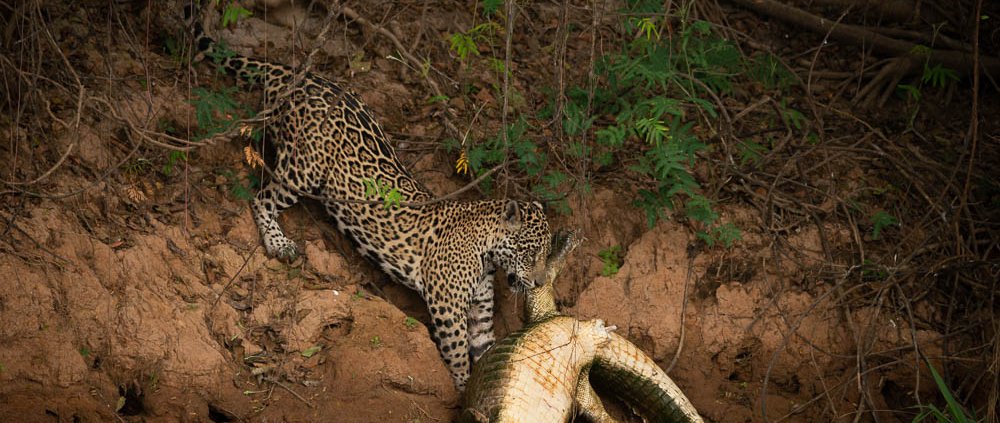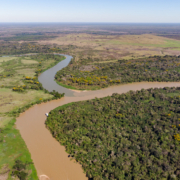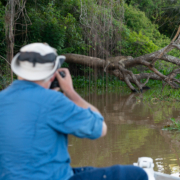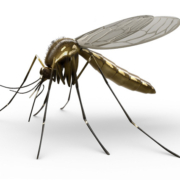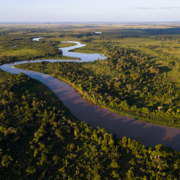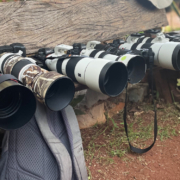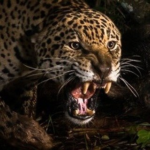What is the best time of the year to go to the Pantanal for a photo tour? This is a common doubt of first-time visitors. On this blog post I will try to give our impressions on each time of the year, but first it’s important to consider that the season in the Pantanal goes roughly from June to late October. So let’s break down each different period.
June and July – this marks the beginning of the season, where there will be relatively fewer boats. Water level is higher than at the peak of the dry season, of course, but low enough already to offer great opportunities to find wildlife at river shore. The slightly higher water levels also allows us access by boat to narrow and shallow areas not accessible during other times of the year. Weather is dry and sunny, with very slim chances for rain. A strong cold front can push in and we then may see some cloud cover and a considerable drop in temperature, which can reach as low as 10º C (50º F) in extreme cases, so bringing good cold weather clothing is essential at this time of the year. Under normal conditions temperatures should vary from a low of 20ºC (68º F) in the morning to 30º (86º F) in the middle of the day, with blue skies.
This time of the year is when the gorgeous pink Piuva trees bloom, which on good years can turn the landscape into a true natural spectacle. It’s hard to predict for sure when they will reach full bloom, as this varies each year and only lasts a couple weeks. Bird feeders will be more active this time of the year. Mosquitoes are not a problem, the number of them are usually really low on this period.
August and 1st half of September – the peak of the dry season and also the peak of tourist season. Rivers at Porto Jofre will have a large number of boats searching for Jaguar. While this is normally seen only as bad news by most people, it actually has one good side: it increases our chances for multiple encounters as there are more people looking for Jaguars in different parts, and we all have radios to communicate to one another. Jaguars here are used to boats and normally will not shy away from them. Also, different from most other operations, we can and will also explore far away areas, with much fewer boats.
Weather at this time of the year is normally hot, with mean temperatures ranging from 24º C (75º F) in the morning to 40º C (104º F) in the middle of the day or even more, but there is still a chance for a rather strong cold front. Air humidity is very low, with low chances for rain. There may be wild fires during this time of the year, turning the sky colors a bit smoky. Many trees will shed their leaves. All this dryness may not sound very appealing, but it’s actually very good to find wildlife, as it will be concentrated where there is water left, and on the river shores as well. Mosquitoes are still not a problem, but we may have a higher number of horseflies.
2nd half of September to late October – the weather starts to show real signs of change now, specially towards the end of the period. There is more air humidity and in the afternoons we should see heavier clouds. Some showers are possible, so it’s important to bring rain gear just in case. There are no cold fronts at this time of the year and temperatures can be very hot, however there may be more cloud cover during some days, which helps bringing temps down a bit.
Wildlife is still very visible and, because of the first rain showers, vegetation is greener towards the end of the period. Bird life is also richer and more active and everything suddenly just feels more tropical. There may be, however, a good number of mosquitoes with the first rains.
So, in essence, the best time of the year depends on what you expect. Wildlife is visible during all this period – the dry season. Outside of this period we do not really reccommend traveling to the Pantanal as it may rain quite a lot and water levels can flood everything, making wildlife much harder to locate. In fact, a lot of lodges are closed from November to March.

